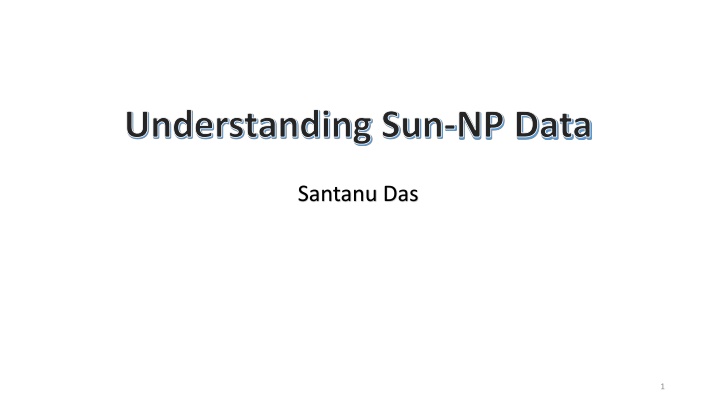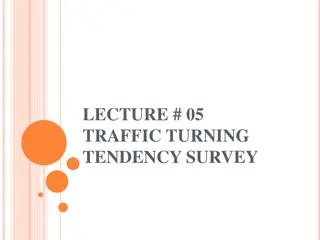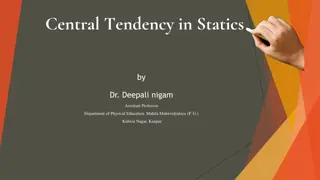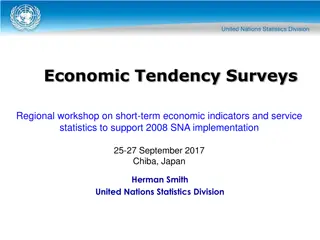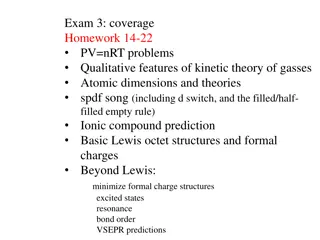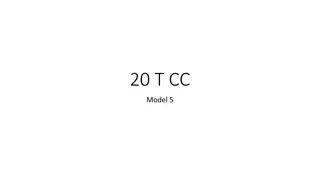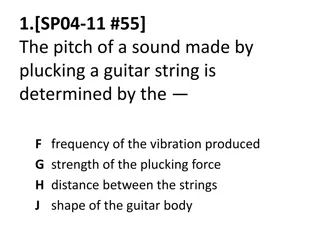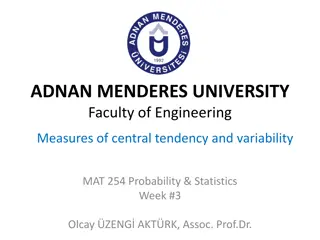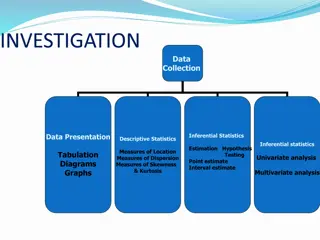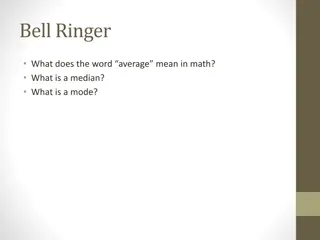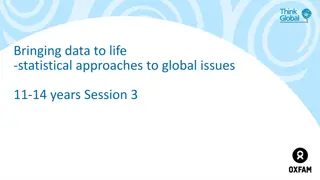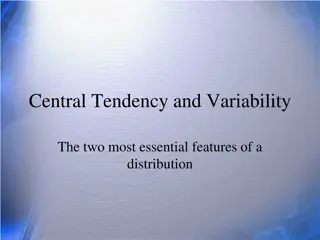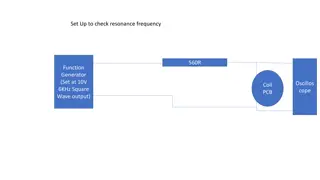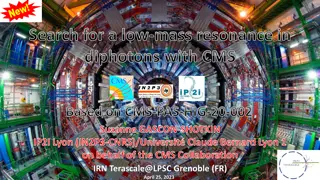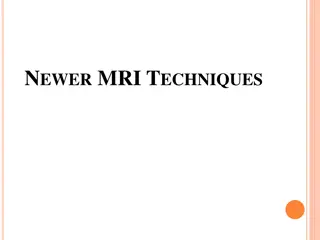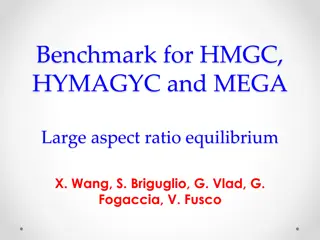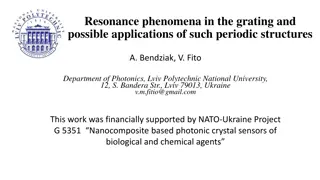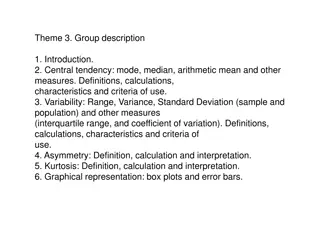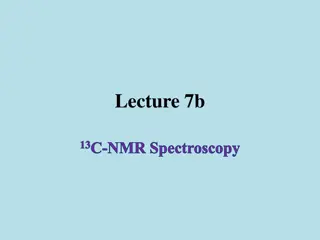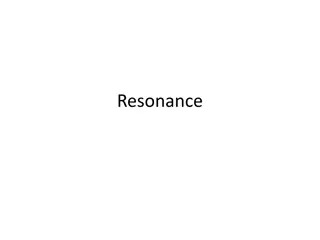Autoresonance: Tendency of a System to Stay in Resonance
Autoresonance (AR) is a phenomenon where a weakly driven nonlinear system remains in resonance with varying forcing and system frequencies over time. Initially observed in particle acceleration, AR has found applications in various fields such as atomic physics, fluid dynamics, and superconductivity. While AR in a single oscillator is well-understood, its behavior in multi-dimensional systems can be more complex. This complexity is demonstrated through examples involving linear chains and nonlinear actuators, highlighting how AR may not universally enhance system responses.
Download Presentation

Please find below an Image/Link to download the presentation.
The content on the website is provided AS IS for your information and personal use only. It may not be sold, licensed, or shared on other websites without obtaining consent from the author.If you encounter any issues during the download, it is possible that the publisher has removed the file from their server.
You are allowed to download the files provided on this website for personal or commercial use, subject to the condition that they are used lawfully. All files are the property of their respective owners.
The content on the website is provided AS IS for your information and personal use only. It may not be sold, licensed, or shared on other websites without obtaining consent from the author.
E N D
Presentation Transcript
Understanding Sun-NP Data Santanu Das 1
NorthPole_20160513184533_20160516181643 Albert s plot last day I = XX + YY Q = XX - YY U = 2 Re XY V = 2 Im XY Black and Red has some random feature Green and Blue has some feature which is getting repeated everyday Albert s hypothesis was that may be some signals are getting reflected on ground or somewhere (may be on the dish in front of those). 2
Rough position of the Dishes According to data given in the Wiki http://tianlai.bao.ac.cn/wiki/index.php/Po sition_of_dishes_and_cylinders_antennae #The_theory_data 3
V = P * exp( i ) John s Calculation Where P is the absolute value of the visibilities. If the array were calibrated we would expect P to be the same for each and every visibility. The information is all in the phase phi. = 2* * / = path length difference between the 2 dishes. When the sun is overhead (and approximating its path as strictly east-west), the path difference is = 8.8 meters * sin( ) is the angle of the sun relative to the zenith. So, when the sun is overhead, an angle change in the position of the sun of 0.028 radians will produce a phase shift of 360 degrees. It would happen at approximately 10 minute intervals. 4
Sun-NorthPole Data 275 - (25,27) 295 - (29,31) 320 - (19,21) 282 - (26,28) 302 - (30,32) 329 - (20,22) Everyday during daytime same kind of pattern is getting repeated. 5
Sun-NorthPole Data 275 - (25,27) 295 - (29,31) 320 - (19,21) 282 - (26,28) 302 - (30,32) 329 - (20,22) Amplitudes for three channels. Almost superimpose over each other. (With some scaling and bias term) 6
Sun-NorthPole Data 275 - (25,27) 295 - (29,31) 320 - (19,21) 282 - (26,28) 302 - (30,32) 329 - (20,22) Phases for Hour 17-18 of the 1st day. Phases are changing as expected. 7
Sun-NorthPole Data 275 - (25,27) 295 - (29,31) 320 - (19,21) 282 - (26,28) 302 - (30,32) 329 - (20,22) For the other set of polarization: Data is getting repeated. But nature is different. 8
Sun-NorthPole Data 275 - (25,27) 295 - (29,31) 320 - (19,21) 282 - (26,28) 302 - (30,32) 329 - (20,22) Where is the repetition?? 9
Sun-NorthPole Data 275 - (25,27) 295 - (29,31) 320 - (19,21) 282 - (26,28) 302 - (30,32) 329 - (20,22) Channel No : 27 27 is a bad channel. Even though its not marked as bad. (Chn 21, 23, 24 are also bad.. Chn 22 has few bad frequency bands) 10
Sun-NorthPole Data 275 - (25,27) 295 - (29,31) 320 - (19,21) 282 - (26,28) 302 - (30,32) 329 - (20,22) Auto Correlation (useless) Why?? No pattern?? Probably because its all noise 11
Sun-NorthPole Data 275 - (25,27) 295 - (29,31) 320 - (19,21) 282 - (26,28) 302 - (30,32) 329 - (20,22) Auto Correlation of 26 What are these spikes in the frequency bands? These spikes are there in many of the feeds. I don t understand why they are coming GOD knows.... Or may be HE is also waiting for us to understand it !! 12
Sun-NorthPole Data 275 - (25,27) 295 - (29,31) 320 - (19,21) 282 - (26,28) 302 - (30,32) 329 - (20,22) Auto Correlation of 26 Why are these discontinuity in the data?? Are these due to the noise?? Or there something wrong going on ? GOD knows.... Or may be HE is also waiting for us to understand it !! 13
Sun-NorthPole Data 275 - (25,27) 295 - (29,31) 320 - (19,21) 282 - (26,28) 302 - (30,32) 329 - (20,22) Is 295 also bad?? Or is it detecting something else? 14
Sun-NorthPole Data 275 - (25,27) 295 - (29,31) 320 - (19,21) 282 - (26,28) 302 - (30,32) 329 - (20,22) Channel No 9 Bad I saw many other channels with similar features (22,..)
Summary : 1. There are more bad channels then listed. 2. Some bad channels can be fixed by removing few rows. 3. Why some spikes are coming in some of the frequency bands?? 4. Why Channel No 295 is behaving like that? 16
Thank You for not sleeping in my talk If you have the answers then please explain 17
